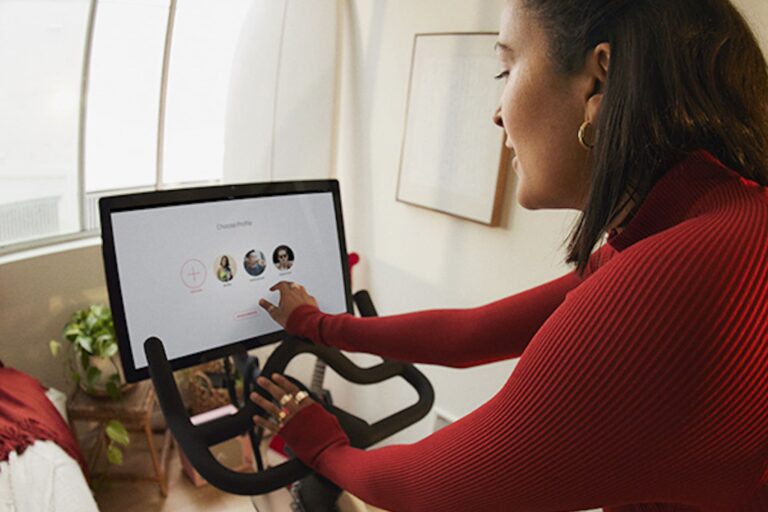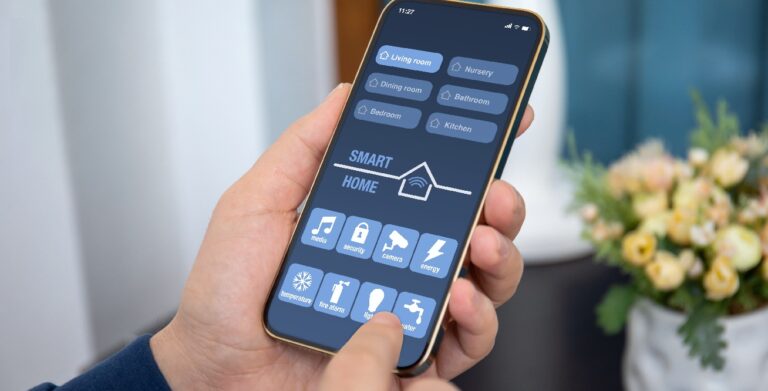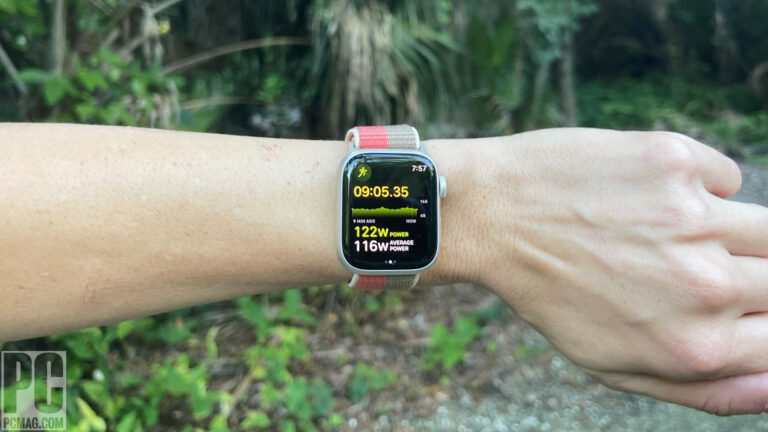Peloton Bike Generations: Unveiling the Power
The Peloton Bike has two generations: the Original Peloton Bike and the Peloton Bike Plus. The Original version is the older generation and comes with a standard display screen, while the Bike Plus is the newer generation with an upgraded screen, faster processor, more RAM, and improved speakers.
The newer generation generally commands a higher price compared to the older model. When buying a used Peloton Bike, it’s important to consider the generation and the features that come with it.

Credit: www.pcmag.com
Evolution Of Peloton Bike Generations
Evolution of Peloton Bike Generations
Discuss the timeline of Peloton Bike Generations
Peloton bikes have undergone several evolutions over the years, bringing new features, advancements, and improvements to enhance the user experience. Let’s take a closer look at the timeline of Peloton Bike generations:
| Generation | Release Year |
|---|---|
| Peloton Bike 1st Generation | 2014 |
| Peloton Bike 2nd Generation | 2016 |
| Peloton Bike Plus | 2020 |
Early models and their features
The early models of Peloton bikes, starting with the 1st generation released in 2014, introduced the concept of bringing immersive indoor cycling experience to homes. These early models featured a sturdy construction, a high-definition touchscreen display, and a live-streaming service that connected users with professional instructors from around the world.
With robust built-in speakers, riders could enjoy crystal clear audio and immersive music during their workouts. The 1st generation Peloton Bike also came equipped with a resistance knob, allowing cyclists to adjust the intensity of their rides.
Advancements and improvements in subsequent generations
The 2nd generation Peloton Bike, released in 2016, brought significant advancements to the already popular workout device. This generation featured a slimmer, more streamlined design with improved hardware specifications. The touchscreen display was upgraded for better responsiveness, allowing for smoother navigation through the Peloton app and various workout classes.
Moreover, the 2nd generation Peloton Bike introduced metrics tracking and leaderboards, allowing riders to compete with other users and track their progress over time. Alongside the resistance knob, this generation also incorporated new features such as auto-follow resistance, where the bike automatically adjusted the resistance based on the instructor’s cues.
Introduction of new features and technologies
In 2020, Peloton introduced the Peloton Bike Plus, the latest addition to their bike lineup. The Peloton Bike Plus boasts an array of enhanced features and technologies, taking the interactive workout experience to new heights.
One of the standout features of the Peloton Bike Plus is the addition of a rotating touchscreen display. This innovative design allows users to seamlessly transition between on-bike workouts and off-bike classes, such as strength training, yoga, and stretching exercises.
The Bike Plus also incorporates integrated speakers for improved audio quality and a 4-speaker sound system, providing users with an immersive audio experience. Furthermore, the Bike Plus includes an auto-follow technology for resistance and a new Apple GymKit integration, allowing users to sync their workouts with their Apple Watch.
In conclusion, Peloton Bike generations have continuously evolved to offer an unparalleled indoor cycling experience. From the early models to the latest Peloton Bike Plus, each generation brings advanced features, improved hardware, and a more immersive workout experience for fitness enthusiasts.
Key Features And Upgrades In Each Generation
The Peloton Bike has undergone several generations of upgrades, each one introducing new features and improvements to enhance the user experience. From display screen resolution to hardware components, let’s explore the distinctive features and upgrades in each Peloton Bike Generation.
Generation 1:
In the first generation of Peloton Bike, several key features were introduced:
- Display screen and resolution: The first-generation Peloton Bike featured a high-definition display screen with a resolution of 1080p. This ensured crystal-clear visuals and an immersive workout experience.
- Processor speed and RAM: The generation 1 Peloton Bike was equipped with a powerful processor and ample RAM, allowing for smooth navigation and quick response times.
- Audio quality and speakers: With its built-in speakers, the generation 1 Peloton Bike offered excellent audio quality, delivering clear and immersive sound that enhanced the workout experience.
Generation 2:
In the second generation of Peloton Bike, significant upgrades were made in various aspects:
- Notable changes in design and construction: The generation 2 Peloton Bike featured a sleeker and more modern design, with improved construction materials that enhanced durability and stability.
- Enhanced connectivity options: Generation 2 introduced expanded connectivity options, allowing users to connect their devices seamlessly and access a wider range of content during workouts.
- Advanced user interface and navigation: The user interface of the generation 2 Peloton Bike was upgraded, making it more intuitive and user-friendly. Navigating through the Peloton app and accessing different features became smoother and more streamlined.
Generation 3:
The latest generation of Peloton Bike, generation 3, brings even more innovations and improvements to the table:
- Latest innovations and improvements: Generation 3 introduces the latest technological advancements, ensuring a cutting-edge workout experience that caters to the evolving needs of users.
- Upgraded hardware components: The hardware components of generation 3 have been upgraded for enhanced performance and longevity, providing users with a seamless and reliable workout experience.
- Integration of new software features: With generation 3, Peloton has integrated new software features to further enhance the workout experience. These features offer added customization options and increased versatility.
As Peloton continues to evolve and innovate, each generation of the Peloton Bike brings new features and upgrades that make home workouts more engaging, convenient, and effective. Whether it’s the improved display screen resolution, enhanced connectivity options, or the integration of advanced software features, each generation caters to the evolving needs and preferences of Peloton users.
Comparison Of Peloton Bike Generations
When it comes to choosing the right Peloton bike for your fitness journey, understanding the differences between the various generations is crucial. Peloton offers different bike generations, each equipped with unique features and improvements. In this article, we will analyze the similarities and differences between Peloton bike generations, focusing on display quality and size, processing power and performance, user experience and interface, as well as cost and value for money.
Analyze the similarities and differences between Peloton Bike Generations
Let’s dive deeper into the comparison of Peloton bike generations and explore how each one stands out:
Display quality and size
The display on the Peloton bike plays a vital role in providing an immersive workout experience. Here’s how the generations differ in terms of display quality and size:
- Peloton Bike Generation 2: This generation features a vibrant and crisp 21.5-inch HD touchscreen display, allowing you to enjoy clear visuals and easy navigation.
- Peloton Bike Generation 3: With an upgraded 23.8-inch HD touchscreen display, the Generation 3 bike offers an even larger and more immersive viewing experience, bringing your workout sessions to life.
- Peloton Bike Plus: The latest addition to the Peloton family, the Bike Plus, boasts a massive 23.8-inch rotating HD touchscreen display. The rotating feature allows you to seamlessly switch between on-bike workouts and off-bike classes, enhancing the versatility of your fitness routine.
Processing power and performance
Having a powerful and responsive system ensures smooth performance during your workouts. Here’s how the generations compare in terms of processing power and performance:
- Peloton Bike Generation 2: Equipped with a robust processor and improved RAM, the Generation 2 bike offers fast and reliable performance, enabling seamless class streaming and app usage.
- Peloton Bike Generation 3: Building upon its predecessor, Generation 3 features an upgraded processor and increased RAM, delivering even faster performance and smoother multitasking capabilities.
- Peloton Bike Plus: With its enhanced processing power and improved components, the Bike Plus sets the bar higher in terms of performance. It ensures seamless streaming, effortless class switching, and a more responsive user experience.
User experience and interface
The user experience and interface are essential factors to consider when choosing a Peloton bike. Here’s how the generations differ in terms of user experience and interface:
- Peloton Bike Generation 2: The Generation 2 bike offers a user-friendly interface with intuitive navigation and easy access to an extensive library of on-demand classes.
- Peloton Bike Generation 3: Building upon its predecessor, Generation 3 introduces improved interface elements and enhances user interactions. It provides a more streamlined and personalized workout experience.
- Peloton Bike Plus: The Bike Plus takes user experience to the next level with its rotating display and improved interface. It allows you to seamlessly switch between on-bike workouts and off-bike classes, providing a versatile and engaging fitness journey.
Cost and value for money
Finally, let’s consider the cost and value for money offered by each Peloton bike generation:
| Peloton Bike Generation | Price |
|---|---|
| Peloton Bike Generation 2 | $1,445.00 |
| Peloton Bike Generation 3 | $1,445.00 |
| Peloton Bike Plus | $2,495.00 |
While the Bike Plus is priced higher than the previous generations, it offers additional features and an enhanced workout experience. Investing in the latest model ensures you have access to the most advanced technology and future-proof your fitness journey.
In conclusion, the comparison of Peloton bike generations highlights the advancements in display quality, processing power, user experience, and value for money. By understanding the differences between each generation, you can choose the Peloton bike that best aligns with your fitness goals and preferences.
Considerations When Choosing A Peloton Bike Generation
Budget and Affordability
When choosing a Peloton Bike Generation, one of the key considerations is your budget and affordability. Peloton offers different generations of bikes at varying price points, allowing you to choose the one that fits your financial goals. The newer generations of Peloton bikes tend to be more expensive due to enhanced features and technologies. However, if you have a limited budget, you can opt for an older generation Peloton bike, which might have lower upfront costs. It’s important to find a balance between your budget and the features you desire in a Peloton Bike.
Desired Features and Functionalities
Another important factor to consider when selecting a Peloton Bike Generation is the desired features and functionalities. Each generation of Peloton bikes comes with its own set of features and advancements. For example, newer generations might have a faster processor, better speakers, and improved display quality. It’s crucial to identify the features that are important to you and align with your fitness goals. Some popular features to consider include a larger screen size, Bluetooth connectivity, and compatibility with third-party apps. Evaluate the features and functionalities of each generation to ensure you select a Peloton bike that caters to your specific needs.
Long-term Upgrade Possibilities
Considering the long-term upgrade possibilities is another crucial aspect to take into account when choosing a Peloton Bike Generation. As technology advances, Peloton continues to introduce new generations of bikes with enhanced features and capabilities. It is important to assess whether you plan on upgrading your Peloton bike in the future. If you envision upgrading to the latest generation in a few years, it might be advantageous to invest in a newer generation model now. However, if you prefer a more cost-effective option and are satisfied with the features of a specific generation, you can opt for an older generation Peloton bike.
By considering these factors – budget and affordability, desired features and functionalities, and long-term upgrade possibilities – when selecting a Peloton Bike Generation, you can make an informed decision that aligns with your fitness goals, preferences, and financial situation. Remember to thoroughly research and compare the different generations of Peloton bikes to find the perfect fit for your indoor cycling journey.
Pros And Cons Of Each Peloton Bike Generation
When it comes to choosing a Peloton bike, it’s important to consider the pros and cons of each generation. Peloton offers three generations of bike models, each with its own unique features and drawbacks. In this article, we will present a comprehensive list of advantages and disadvantages for each Peloton Bike Generation.
Generation 1:
Pros:
- More affordable price compared to newer generations.
- Offers a wide variety of on-demand and live classes.
- Provides a smooth and quiet ride.
Cons:
- Older technology with a slower processor and less RAM.
- Less advanced display screen with lower resolution.
- Limited connectivity options.
Generation 2:
Pros:
- Improved processing power and faster performance.
- Enhanced screen resolution for a more immersive experience.
- Increased connectivity options, including Bluetooth and Wi-Fi.
Cons:
- Higher price compared to the first generation.
- Some users have reported issues with hardware durability.
- Less updated software features compared to newer generations.
Generation 3:
Pros:
- Most advanced technology and features.
- High-resolution display screen for clear visuals.
- Wide range of connectivity options, including Bluetooth, Wi-Fi, and Ethernet.
Cons:
- Highest price compared to previous generations.
- Some users have reported occasional software glitches.
- May not be worth the extra cost for users who don’t utilize all the advanced features.
In conclusion, each Peloton bike generation has its own advantages and disadvantages. Consider your budget, desired features, and priorities when choosing the right bike for your fitness journey.
Frequently Asked Questions For Peloton Bike Generations
How Can You Tell If A Peloton Is Gen 2 Or Gen 3?
To determine if a Peloton is Gen 2 or Gen 3, check the display screen. Gen 3 screens are thinner with a faster processor, more RAM, and better speakers.
What Is The Difference Between The Peloton Bike Generation?
The Peloton Bike has three different generations of display screens. The newer models have a faster processor, more RAM, and better quality speakers. Buying a used Peloton? Keep in mind that older models may be cheaper.
How Many Models Of Peloton Bike Are There?
There are three generations of Peloton Bike, with newer models having thinner screens, faster processors, more RAM, and better speakers. Older models are priced lower.
Are There Different Versions Of The Peloton Bike?
Yes, there are different versions of the Peloton Bike. There are three generations of Peloton display screens. The newer screens are thinner, faster, and have better quality speakers compared to the older models.
Conclusion
When it comes to Peloton Bike generations, there are three different display screen options. The older models may come at a lower price point, but the newer screens offer a faster processor, more RAM, and better quality speakers. Whether you choose the original Peloton bike or the Peloton bike Plus, you can expect a game-changing cardio experience.
Consider your budget and desired features when deciding which generation is right for you. Happy riding!






